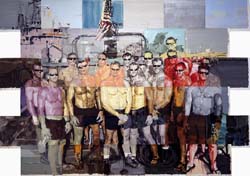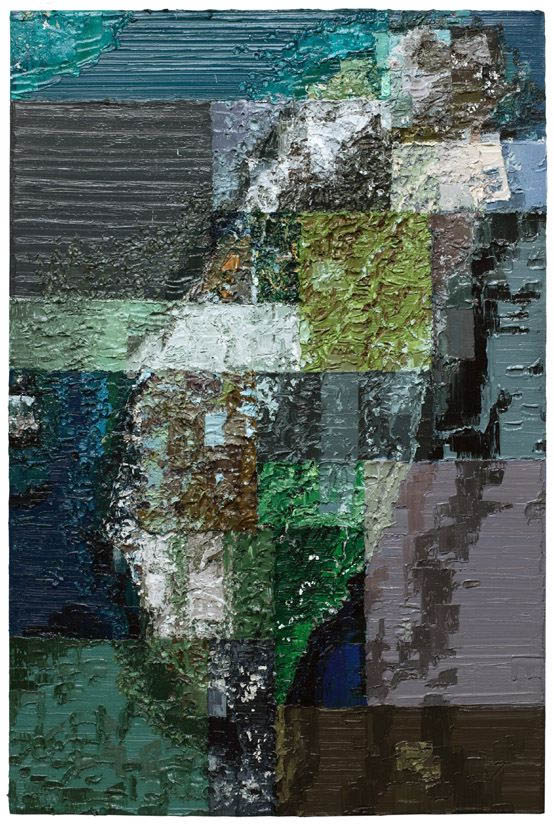

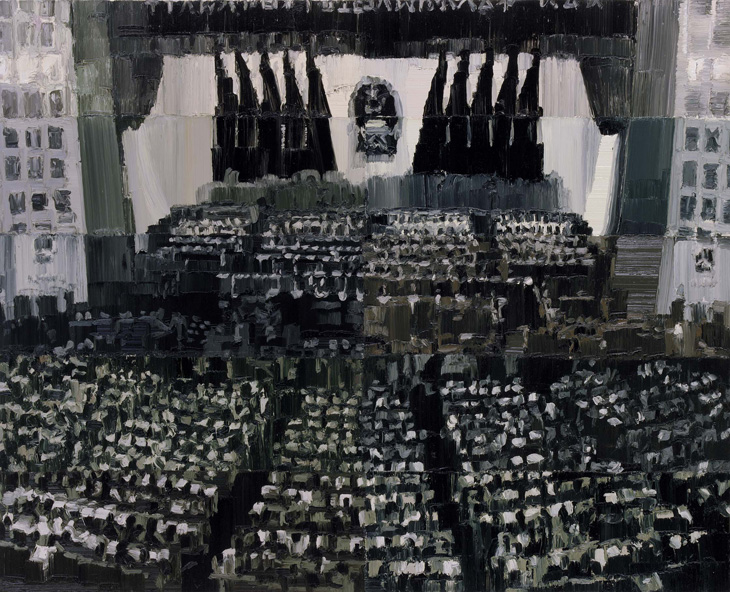
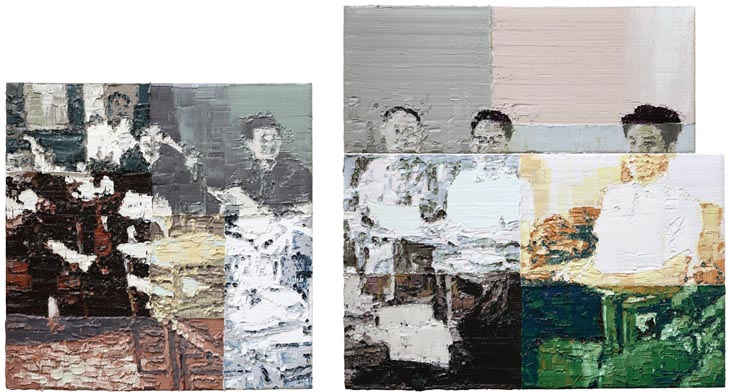
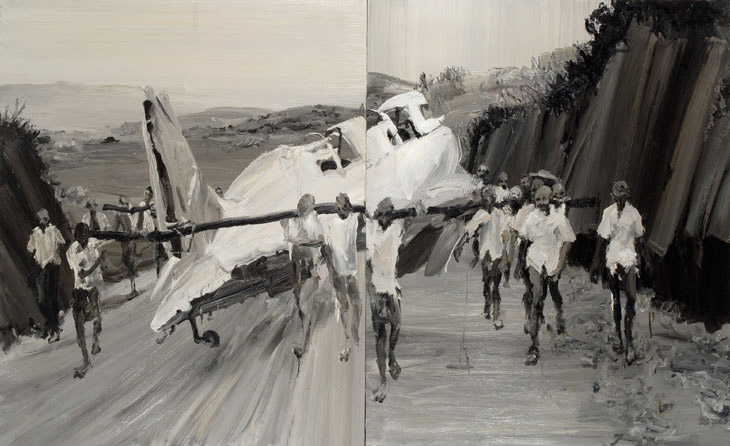
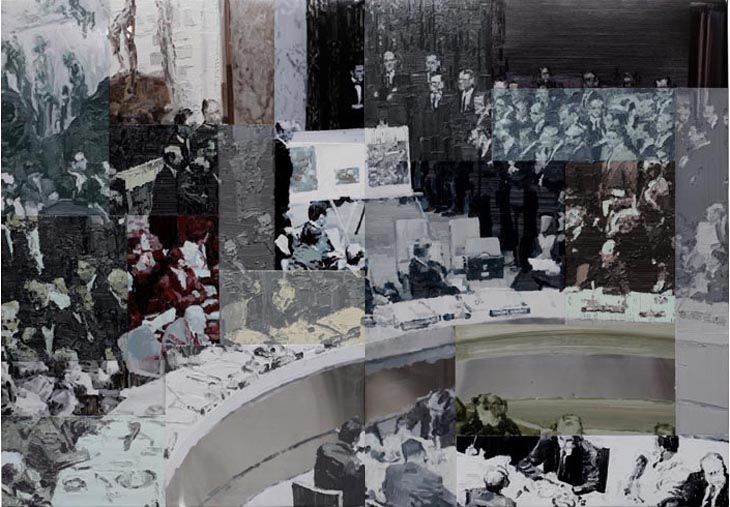
Li Songsong
For National Geographic, Li took his source material from over 100 Google Earth images. Translating these jpegs into the language of paint, Li’s textured canvas refers to both digitisation and topographical maps, with fields of thick impasto replicating the gradations of land and water. Picturing the island of Taiwan, Li’s painting pushes the boundaries of abstraction, both visually and conceptually: The remote distance of satellite photos, paradoxically reproduced in Li’s highly physical and intimate style of painting, convert the map into a disorienting terrain, equally virtual and haptic.
In God We Trust is a monumental sized canvas featuring a snapshot grouping of American soldiers, a memoir keepsake entwined with propagandist agenda. Dividing the canvas into a grid-like ’map’, Li negotiates the image as a terrain for painterly experimentation. Each section is given a different aesthetic quality: the palette shifts with the unpredictable tones of photographic prints, as if over- or under-exposed, exploiting the range of RGB manipulation; the surface veers from ephemeral washes to intensely physical brushwork. The squared segments suggest not only the mechanical origins of the image, but also the multiplicities of its interpretation, questioning the position of the individual in relation to the malleability of history.
Li’s The Decameron takes its title from a novel written by Giovanni Boccaccio in the mid-14th century; structured as a frame narrative the book is a collection of 100 stories told by ten characters over a period of ten days, creating not one continuous plot, but a medley of tales surrounding set themes. In Li’s painting, Boccaccio’s literary structure is applied to dissemble and reinterpret a public source photo of the 2004 National People’s Congress. Elongating the original image then cutting it into 10 separate pieces, Li completed the painting in individually demarcated sections, each one a distortion and biased embellishment of an historical event.
Themes of intimacy, remoteness, and anxiety run throughout Li’s work. His scenes gain a haunting uncanniness not from their place in social memory, but because of their intensely concentrated surfaces. Treating his loaded source material as a void template, Li approaches painting as a purely amoral intervention, a meditative engagement with the possibilities of personal significance within an increasingly virtual world. Li’s diptych This Is How We Talk Politics blurs this distinction between public and private. Its sumptuously textured panels paradoxically convey the speed, pixellation, and distortion of mass media as fixed and tangible matter. Thick impasto fields in greyscale loom like a concrete facade, gauged and pockmarked, stippled and annotated through Li’s obsessive gestures, creating an almost spiritual contemplation of beauty from the intrinsically impersonal and generic.
In Gift, Li’s expressionistic painting utilises the devices of photography to allude to the deceptive qualities of images. Picturing Chinese fighters parading a shot down enemy airplane during the second Sino-Japanese war, Li renders the scene as a purely aesthetic experience, supplanting historical connotation with his own legacy of artistic production. Mirroring the original documentary photo, Li’s black and white palette concentrates attention on the formal techniques of the painting; the scene becomes secondary to Li’s seductive brushwork, as ’fact’ becomes disembodied into a malleable network of fluid, loose gestures. The right side of the image has been slightly enlarged to force a comparative study of the image, underscoring the subjectivity of represented ’truth’.
Li painted Cuban Sugar in 2006 at a time when China underwent a crisis in domestic sugar production, forcing it to engage in trade with Cuba to cut inflation. Li’s visualisation of this event is fractured, reflecting this ideological conflict of interest with an image that is not self-sustaining, but rather uncomfortably made up of a composite of independent sections. Executing his scene as a montage, each defined area operates as a painting within a painting, suggesting a layered and disjointed approach to historical interpretation, further complicated by Li’s intensely formal approach to his subject. Li offers no political opinion within his work, but focuses solely on the act of painting to open new relationships between individual perception and the authoritative narratives of documentation.

